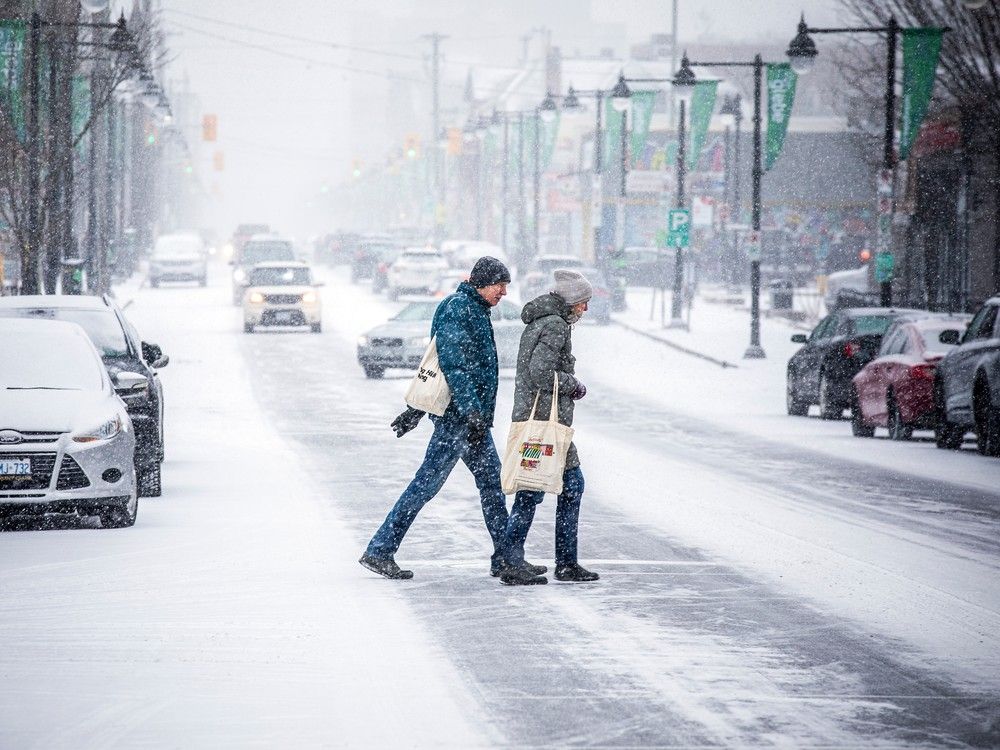MONTREAL — Nathalie Morisseau leapt at the chance for a last-minute sun vacation with her 23-year-old daughter — as long as it wasn’t in America.
“With my father being Haitian, there’s a certain fear around being able to go to the United States,” she said, citing concerns around immigration enforcement and attitudes toward perceived outsiders.
“It’s not attractive,” Morisseau said at the Montreal airport ahead of a flight to the Dominican Republic late last month.
“And it’s scary.”
She’s not alone. Hundreds of thousands of Canadians continue to steer clear of the United States roughly 10 months after President Donald Trump took office, with baby boomers leading the flight — even as younger people, along with those feeling the pull of warm weather and community south of the border, remain more willing to go.
The number of Canadians returning from the U.S. by car and plane combined fell by roughly a third in September compared with the same month last year, according to preliminary data from Statistics Canada. It marked the ninth straight month of year-over-year declines for return trips by car.
“Canadians are really choosing destinations other than the U.S. to travel,” said Will McAleer, executive director of the Travel Health Insurance Association of Canada. “We saw that particularly amongst the boomer crowd.”
The number of baby boomers likely to head stateside this winter fell by two-thirds to 10 per cent, according to an association survey. However, Gen Z respondents saw only an 18 per cent drop to 44 per cent. The lower the age, the higher the appetite to visit — though it remains depressed across the spectrum.
Growing aversion to America can be chalked up to political tensions over Trump’s tariffs and 51st-state rhetoric as well as rising costs and exchange rates — the loonie is worth about 71 cents US — the survey found.
To accommodate changing travel patterns, Air Canada is ramping up flight volumes to the Caribbean, Latin America and Europe while cutting capacity to the U.S. Other airlines have made similar moves.
And Americans are noticing. Multiple states have rolled out tourism campaigns designed to win Canadians back to their resorts and restaurants.
In California, Canadian visitors are expected to spend US$3 billion this year versus US$3.7 billion in 2024, said Ryan Becker, a senior vice-president at Visit California, a non-profit corporation that launched the “California Loves Canada” campaign with Gov. Gavin Newsom earlier this year.
“That’s a gut punch to the industry,” Becker said last week from Toronto, where he accompanied a delegation of more than a dozen Golden State tourism executives on a tour that included Calgary and Vancouver. “This is not something that we are taking lightly.”
Still, border traffic is far from a trickle. Nearly 1.8 million Canadians returned by land or air from the U.S. in September, the StatCan data shows.
Many find themselves conflicted.
Alanni Duenas took his one-year-old son to Chicago for a friend’s wedding this month despite serious concerns over a crackdown by U.S. Immigration and Customs Enforcement.
“The neighbourhood I’m going to, where my family’s from, is hit hard by ICE,” said the dual citizen. “ICE just coming out of nowhere, taking them, they don’t hear from them.”
Two of his uncles who are naturalized citizens were temporarily detained, he said.
His partner Giuliana Biancardi said she was “very nervous, especially with my son — bringing kids across the border.
“There’s no way we’re going back just for funsies,” she said.
For others, considerations ranging from cheaper travel to friends and kinship ties keep them coming back.
“Younger people … don’t necessarily have the budget to travel to farther places,” said Barry Choi, who runs the Money We Have personal finance and travel website.
“Going to Orlando Disney is probably cheaper than going to Tokyo Disney.”
Those who still want to see Broadway, Beale Street or Sunset Boulevard may take up what McAleer calls “quiet travelling” — an under-the-radar approach to tourism that’s light on social media posts, shared with others only in hushed tones or with a pinch of guilt.
“It’ll be, ‘Well, yeah, I’m going to go down there.’ But they’re not going to promote it in the same manner,” he said.
Meanwhile, corporate travel to big U.S. cities continues to hum along, according to Flight Centre Canada.
“Business is business. We don’t have a choice,” said Catherine Paquin, who works as a boat dealer with her husband. She flew to Washington, D.C., from Montreal to pick up a vessel in Maryland and haul it to Fort Lauderdale, Fla., last week.
“The boat market is in Florida,” she said, while acknowledging others’ reservations. “There are a lot of my friends who don’t want to go to the United States right now, for political reasons.”
Canadians with property on the far side of the 49th parallel will likely keep coming back as well.
Between 30 and 40 per cent of snowbirds own a home in the U.S., said Stephen Fine, founder of Snowbird Advisor Insurance. About 70 per cent come by car.
“They’re unlikely to leave their condo or their house empty for the winter,” Fine said. “And for those who want to have their vehicle with them over the winter, the U.S. is really their only option.”
Then there’s the social element.
“They have communities and friends that they go and see every year. That’s important to them,” he said.
For those resistant to the idea of embracing America in the age of Trump, the weather may yet win over some hearts and minds.
“We haven’t even had the first snowstorm yet,” said Jill Wykes, editor of Snowbird Advisor, an online resource for Canadians wintering outside the country.
“That normally makes people want to go.”
This report by The Canadian Press was first published Nov. 9, 2025.
Christopher Reynolds, The Canadian Press



